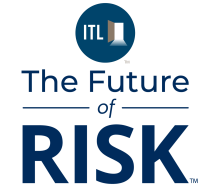The one-quarter mark of the 21st century offers us a chance to reflect on the past – assessing the technology that has transformed insurance, recognizing how our industry has changed in the digital age, and striving to understand what the rise of insurtech, AI, and automation have taught us.
It's also an opportunity to look forward, using the insights of the past to better understand where the industry is headed in the future.
Over the past decade, digital transformation has redefined nearly every facet of insurance, from policy underwriting and distribution to the way claims are processed and managed. This rapid digitalization has primed insurers to embrace deeper cross-industry collaboration, adopt smarter and more streamlined claims processes, and balance innovation with compliance and customer trust.
As insurers look to predict the state of their industry by 2030, they're now well equipped to ride the next wave of disruption – whatever it may be. Those that invest in intelligent automation, personalized engagement, and flexible operating models will be best positioned to thrive in a dynamic and data-driven marketplace.
AI: A New Operating Model
By leveraging AI's ability to automate tasks, personalize offerings, and streamline workflows, insurers now operate in a reality where underwriting is up to 36% more efficient, customer service teams are over 30% more productive, and claims are processed up to 50% faster. Consider that 70% of simple claims are now resolved in real time – a rate of service that might have seemed unimaginable merely a decade ago.
On the sales side, AI is helping carriers boost conversions and cut acquisition costs, while freeing agents and brokers from time-consuming admin so they can focus more on providing the human touch so many clients desire.
That's just the beginning. AI and machine learning are maturing rapidly, poised to become even more foundational to underwriting, pricing, fraud detection, and service. These tools can process large amounts of data, assess risk, and design products, allowing insurers to optimize workflows across the value chain, enable seamless claims processing, automate policy issuance, and reduce administrative overhead. Personal AI assistants are also gaining momentum, guiding customers through purchasing decisions, answering policy questions, and offering recommendations based on life events or behavioral data, all in real-time.
These technologies won't just improve efficiency: They'll reduce costs, improve accuracy, and allow human teams to focus on higher-value interactions.
Customer-Centricity and Personalized Offerings
By 2030, successful insurers will be able to anticipate customer needs and deliver frictionless, individualized, omnichannel experiences. Leading insurance carriers are already prioritizing customer-centric approaches, developing innovative operating models that fundamentally drive value for insurers while constantly improving the way they interact with policyholders.
When insurers incorporate AI into claims processes, they not only enhance efficiency but infuse greater empathy across the customer journey. AI-powered systems can now analyze tone and sentiment in real time – such as detecting distress in phone callers – allowing insurers to ensure more responsive and compassionate customer interactions. Additionally, by freeing human agents from menial tasks, AI allows them to spend more time serving customers with the care and attention they deserve.
Insurers will also continue using data to offer more tailored policies. Consider the hyper-personalized underwriting possibilities of auto insurance based on driving scores. A 2024 survey from CMT, for example, found that 92% of respondents either agreed or strongly agreed with the statement that "Every driver in the U.S. should pay insurance based on how safely they drive."
The result isn't just greater customer satisfaction. It amounts to deeper, more profitable relationships across a lifetime of engagement.
Unlocking Speed and Resilience
Data-driven decision-making, supported by cloud-native infrastructure and AI, are allowing insurers to reduce the process of testing and launching products from months to mere weeks. This level of automation will streamline service, reduce cycle times, and ensure dynamic compliance with evolving regulatory standards.
It can also enhance workforce capabilities, re-skilling employees to work alongside AI tools and take on more consultative roles. A dual investment in both technology and the people who know how to use it will be key to fostering resilience, innovation, and long-term growth.
Insurance will also continue to be deeply interwoven with adjacent sectors, from banking and healthcare to energy and transportation. By integrating and partnering with insurtechs, digital platforms, mobility providers, and health services to expand value beyond the policy itself, carriers will deepen their ecosystem partnerships and expand what they can offer to customers. As enablers of long-term resilience against risks of any kind, insurers can reinforce trust and stability in an era of seemingly endless disruption.
Ensuring a Safer Future
Incremental adjustments won't be enough to keep carriers competitive.
The winners will be those that embrace change not as a threat, but as an opportunity to redefine their role – from reactive risk managers to proactive partners, dedicated to adopting whatever technologies and strategies are necessary to improve the lives of their customers.







